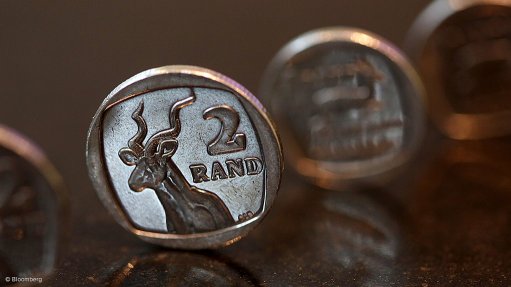District Development Model to improve planning, implementation as South Africa embarks on economic recovery
The Covid-19 pandemic is providing a good socioeconomic testing ground for the newly rolled-out District Development Model (DDM), with its One Plan, One Budget strategy expected to alleviate disjointed planning, budgeting and implementation across the different spheres and entities of government.
The model seeks to programmatically address the persistent socioeconomic challenges of poverty, inequality, under-development and unemployment.
During a virtual webinar hosted on January 27 by Creamer Media on behalf of the Department of Cooperative Governance and Traditional Affairs (Cogta), in partnership with DDM implementer the Development Bank of Southern Africa (DBSA), the DDM’s One Plan, One Budget strategy was touted as an effective device with which to roll-out of the Covid-19 vaccine.
Cogta deputy director-general Themba Fosi noted that the DDM was an operational model that provided a comprehensive way for the three spheres of government − national, provincial and local − to coordinate their efforts in responding to the perennial challenges facing South Africa.
DBSA infrastructure delivery group executive Chuene Ramphele said the DDM was being implemented during a time when South Africa, and the world at large, was being confronted by the “brutality” of Covid-19.
As such, he pointed out that the DDM called for the nation’s citizens and institutions to work together and employ all the necessary “artillery”, intellect and resources to fortify the fight against Covid-19 and strengthen the health and wellbeing of all who reside in South Africa.
In this regard, Ramphele said the DBSA, along with Cogta and municipal infrastructure support agencies, have been involved in the implementation of short- and long-term interventions to counter the impact of Covid-19 on vulnerable communities in identified hotspots.
This, he said, took the form of, for instance, the provision of solar-powered boreholes and water tankers and the restoration of existing boreholes and pump stations to bolster personal hygiene and promote hand washing.
Ramphele noted that, through the DDM, focus had shifted to the financial state of municipalities, which were on the receiving end of the disproportionate distribution of planning and project preparation capabilities, with the overall aim being mitigation of the impact of Covid-19.
He explained that the DDM would assist provincial programme management units to make a significant impact in shaping the capacity needed to achieve municipal revenue growth, infrastructure planning and preparation of projects, thereby providing much-anticipated opportunity for government and the private sector to collaborate.
“The advent of the DDM presents an opportunity to work together to change the lives of our people for the better through quality service delivery.”
Ramphele said the advent of the DDM encouraged parties to work together to grow South Africa’s economy, which was critical to address poverty, unemployment and inequality.
“It also points us to work together to build resilient and vibrant communities that participate in government affairs. As South Africans, we have to roll up our sleeves and work together, especially at a local government level, to ensure our people receive essential basic services needed to advance the socioeconomic progress.”
THREE PRINCIPLES
Fosi noted that the DDM was guided by three important principles, the first being people-centred development.
“We need to create and build more functional and liveable spaces in villages, towns and cities. This requires that we invest in the right places, informed by the demographics and spatial trends of such areas, to create integrated communities that are able to unlock economic, social and cultural opportunities that respond to the needs of those communities.”
The second principle is that of spatialisation, which sees the programmes and budgets of the three spheres and departments mapped into spatial locations. Such a spatial logic enabled government to respond to the realities and challenges people face, he noted.
The third principle is reprioritisation, which involves the process of reviewing and changing historical plans and budgets to realise the physical and integrated impacts desired for South Africa’s 44 district municipalities and eight metropolitan municipalities.
“When Cabinet approved the DDM, it also approved that we should coordinate all of government in those 52 spaces,” said Fosi.
The DDM starts by developing a comprehensive profile, which maps the state of development of each of the 52 spaces – it is informed by a comprehensive set of indicators for understanding the population of that district in terms of poverty levels, education levels, crime, health status and infrastructure requirements, besides others.
However, it goes beyond that to determine the endowment structure of specific districts and what they can offer in terms of opportunities and potential, including competitive advantages and how these benefits link with neighbouring districts, provinces and the national economy, including beyond the borders of South Africa.
ONE PLAN, ONE BUDGET
Through implementation of the DDM, all 52 regions become critical points of convergence for all of government in responding to the realities that people are facing, Fosi pointed out.
The DDM thus emerges as a “game changer” with its One Plan, One Budget strategy coming into play as a long-term development tool.
“The DDM . . . introduces a new way of working to ensure that the different spheres [of government], State entities and civil society work in unison to ensure we are focused in a responsive way to the challenges. We are then able to mobilise all the different sectors of society.”
He added that, through the One Plan, One Budget strategy, there were a set of objectives that were shared by all involved and that, in terms of budget, there would be clear commitments towards what needed to be done for the plan of the respective districts.
Further, Fosi noted that with the One Plan, One Budget strategy, the private sector and different civil society formations that were located in specific districts would have a clear sense of the future they wanted to attain in terms of making opportunities available.
Prior to its larger-scale implementation, the DDM was piloted in the eThekwini metropolitan municipality and the OR Tambo and Waterberg districts. The lessons learnt from these pilots over the past 25 years clearly lays bare that cooperative governance across the three government spheres is still characterised by siloed fragmentation and duplication, resulting in the poor use of the various spheres’ resources, he noted.
Meanwhile, Fosi highlighted that one of the areas in which South Africa had not invested was implementation mechanisms and building such capability.
“We have sound policies and structures that have been established across the three spheres, but the implementation capability has not been unpacked such that we can say ‘this is how we need to plan as the three spheres’, and how the budgets must be aligned.”
Article Enquiry
Email Article
Save Article
Feedback
To advertise email advertising@creamermedia.co.za or click here
Comments
Announcements
What's On
Subscribe to improve your user experience...
Option 1 (equivalent of R125 a month):
Receive a weekly copy of Creamer Media's Engineering News & Mining Weekly magazine
(print copy for those in South Africa and e-magazine for those outside of South Africa)
Receive daily email newsletters
Access to full search results
Access archive of magazine back copies
Access to Projects in Progress
Access to ONE Research Report of your choice in PDF format
Option 2 (equivalent of R375 a month):
All benefits from Option 1
PLUS
Access to Creamer Media's Research Channel Africa for ALL Research Reports, in PDF format, on various industrial and mining sectors
including Electricity; Water; Energy Transition; Hydrogen; Roads, Rail and Ports; Coal; Gold; Platinum; Battery Metals; etc.
Already a subscriber?
Forgotten your password?
Receive weekly copy of Creamer Media's Engineering News & Mining Weekly magazine (print copy for those in South Africa and e-magazine for those outside of South Africa)
➕
Recieve daily email newsletters
➕
Access to full search results
➕
Access archive of magazine back copies
➕
Access to Projects in Progress
➕
Access to ONE Research Report of your choice in PDF format
RESEARCH CHANNEL AFRICA
R4500 (equivalent of R375 a month)
SUBSCRIBEAll benefits from Option 1
➕
Access to Creamer Media's Research Channel Africa for ALL Research Reports on various industrial and mining sectors, in PDF format, including on:
Electricity
➕
Water
➕
Energy Transition
➕
Hydrogen
➕
Roads, Rail and Ports
➕
Coal
➕
Gold
➕
Platinum
➕
Battery Metals
➕
etc.
Receive all benefits from Option 1 or Option 2 delivered to numerous people at your company
➕
Multiple User names and Passwords for simultaneous log-ins
➕
Intranet integration access to all in your organisation


















